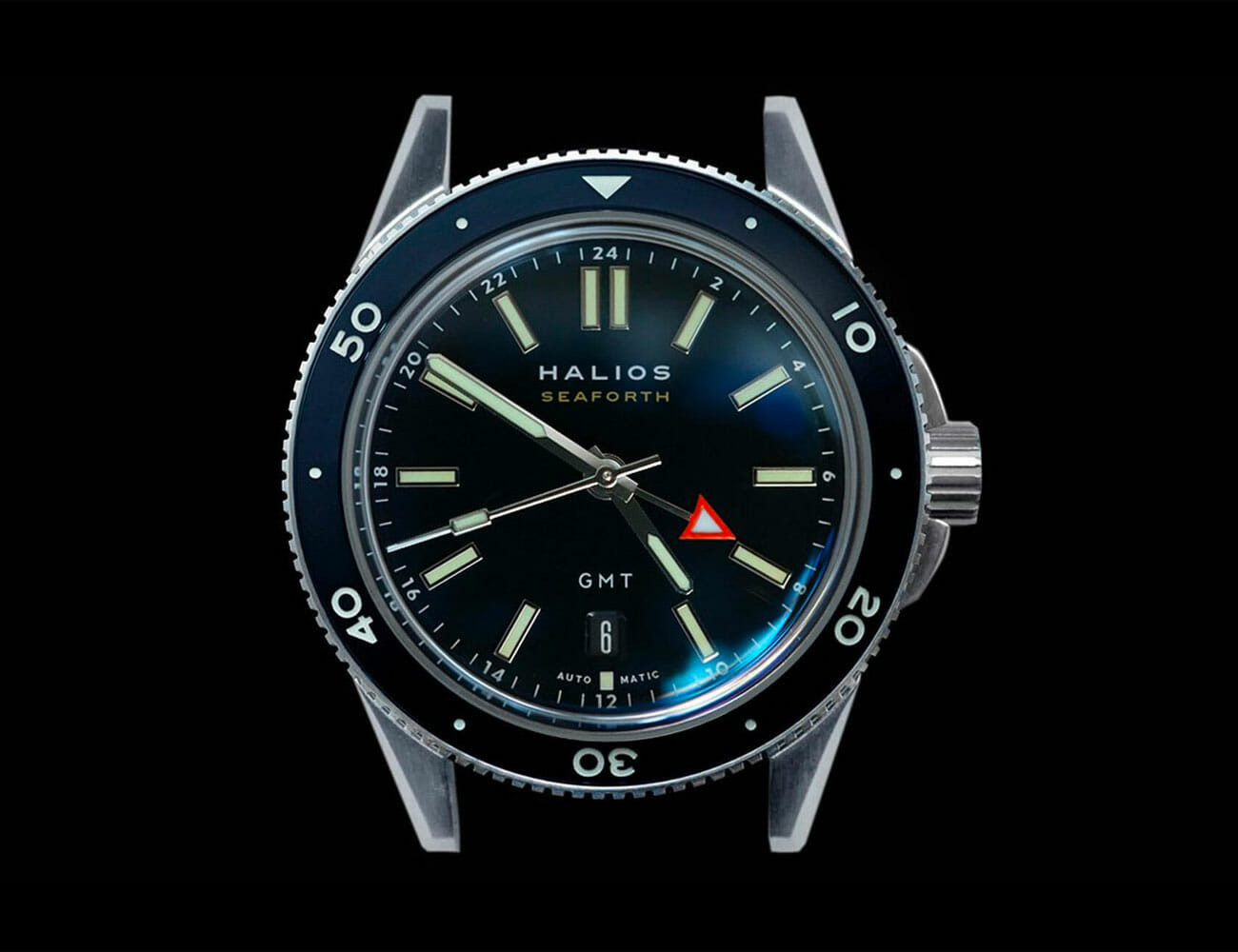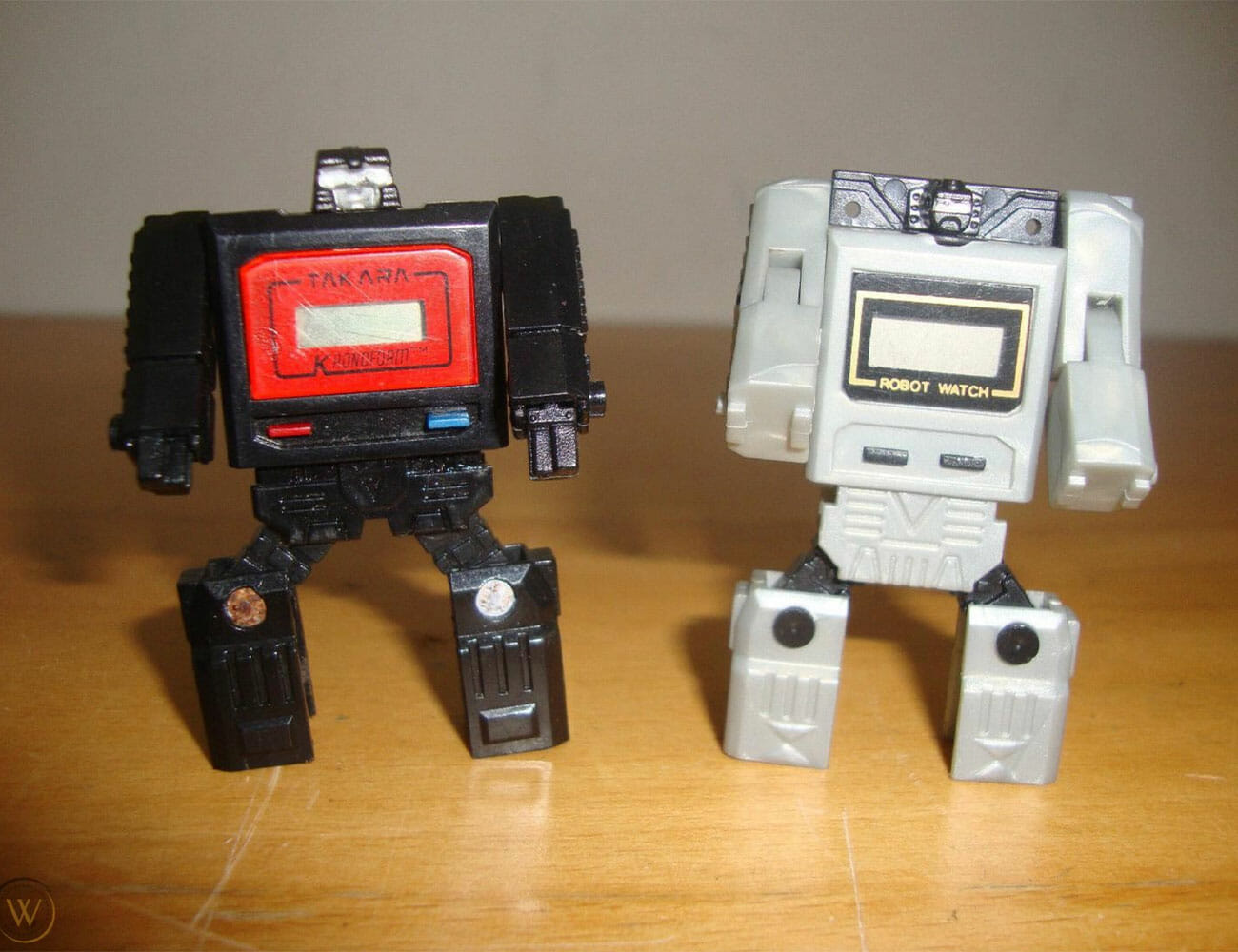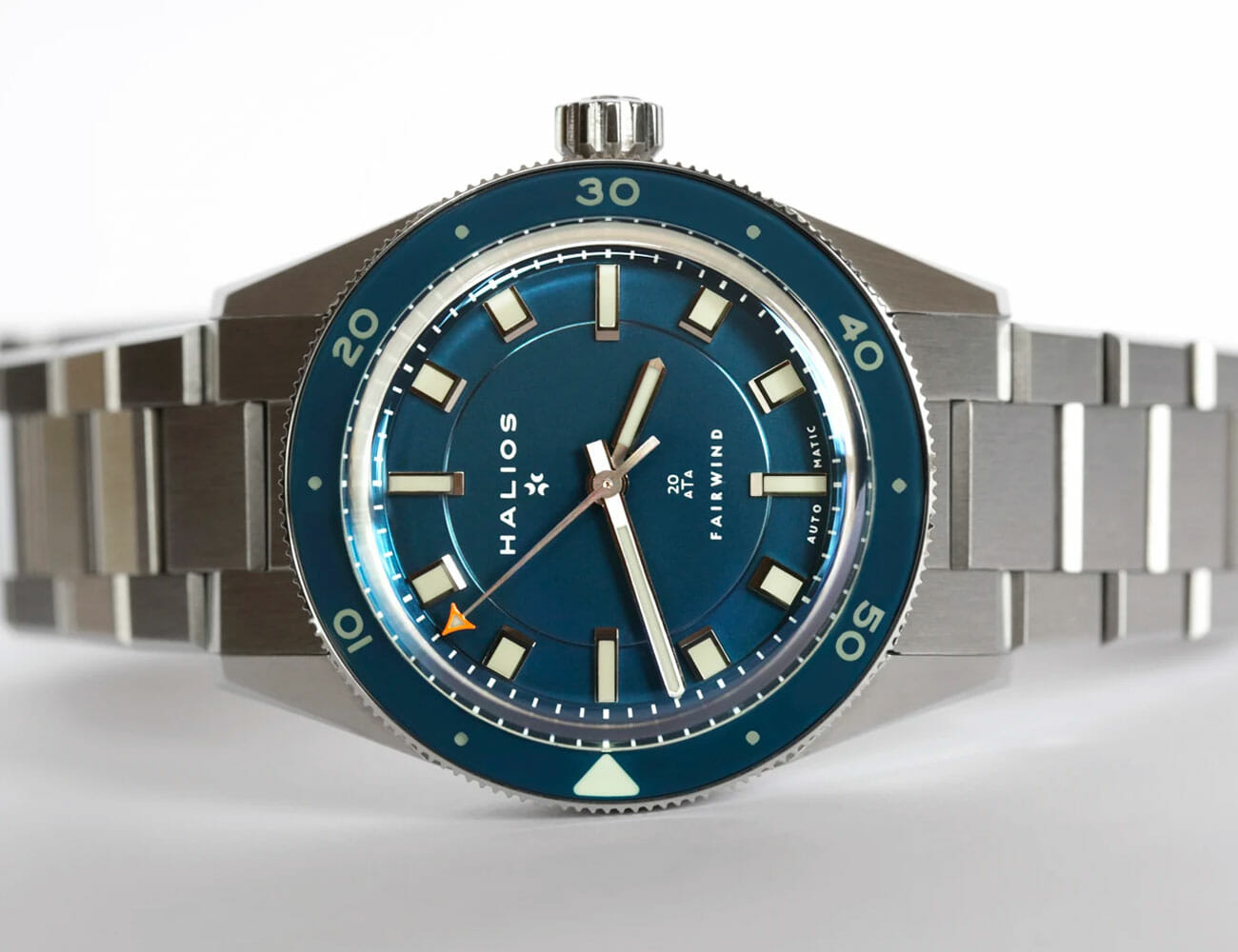“Eventually I’d like to build a workshop on an isolated island,” says Jason Lim, the founder of Halios. “I’d make every component, except for hairsprings, maybe, by hand, and produce something like 20 watches a year.” (He’s only half-joking.) If this were to happen, the watch world would be very lucky — but also very sad, indeed.
Lim’s work with his brand Halios has been ground-shifting for the indie watch world. Since Lim started it in 2009, Halios has been one of the most sought-after indie brands, known for its red-hot divers — watches that are ridiculously affordable, classically beautiful, and feature some of the most eye-catching design touches in the boutique watch world. (See: the stunning Seaforth GMT (below), with its GMT bezel and blue dial.) Halios opened the door for what an indie dive watch could — and perhaps should — be, and dozens of great companies have poured into the creative space Lim painstakingly carved out for himself.
Just in case he does decide to go full-on “watchmaker hermit”, we caught up with the famously busy Lim (over email, of course), about his new batch of watches, how he got into timekeeping, his long view of the indie watch industry, and his design inspirations.
Q: When was the first time you can remember being infatuated or intrigued by a watch? How did you get into watches?
A: It was the early 80s and it was the best thing that I had ever seen in my life: an LCD watch that transformed into a robot. It was produced by the now-defunct Japanese toy company Takara — Google “Kronoform robot watch.” My wrist hasn’t gone bare since, and I’m still infatuated with digital watches. My dad would travel for work often across Asia, picking them up as souvenirs for me from each of his trips.
I didn’t get into mechanical watches until my early teens, via the patron saint of horological enablement, Seiko. The very first watch that I ever tore down and rebuilt was a Seiko 6138 UFO. I use that term, “rebuilt,” very loosely here. It may or may not have been functional after the “rebuild”…The affliction really took hold after this discovery of mechanical watches.
Q: What was your first watch you ever owned? How about your first “serious” (however you want to define that) watch?
A: Thinking back on a long collecting history, I went through the usual suspects to see what would fit the “first serious watch” role: the expensive watch, the milestone watch, the nerd cred watch, etc. But, the answer that made the most sense was my first analogue watch from almost 35 years ago. It was a quartz M Watch (manufactured by Mondaine) that I wore everywhere, right up until the day it no longer fit my wrist. It survived the hard use of a plucky but slightly clumsy kid growing up in the tropics. Concisely designed, durable and water-ready — reads a lot like the type of watch that Halios aspires to offer, but probably just a coincidence, right?
Q: What brands do you love? What’s in your personal collection?
A: I’m entirely in awe of the independents that occupy the haute horlogerie space. Also, any enthusiast brand, or “microbrand,” that has broken the mould and succeeded in developing some form of in-house fabrication or production. The rest of the list is fantastically long — there are a ton of inspiring brands out there that I love from both the past and present.
My current (non-Halios) collection currently sits at roughly 50 watches. It’s a pretty eclectic mix, not skewing heavily towards any one particular type of watch or brand.


Q: Can you tell me some specific watches in the collection?
A: There are vintage digital calculator watches in there, a couple of no-date Subs from the late 90s, a Topper Edition Zodiac Sea Wolf Series II with yellow rally bezel, a Certina from 1971 that purports to help you track your biorhythms…
Q: One leg of your tripod mission statement is to build a watch that buyers can “wear in the water.” What, in your experience, makes wearing a dive watch while diving so special? Along with that, why do we love dive watches so much?
A: Art and function seem to be two mutually exclusive things a lot of the time, so to be able to actually use a well-designed, beautiful object is really fulfilling. Being able to wear a watch underwater, to me, means that this thing that you’ve chosen as a reflection of your tastes really is capable of handling all aspects of your lifestyle.
I think the dive watch aesthetic is particularly compelling because its intended purpose directly drives its design — I hate to use a cliché but ‘form follows function’ really is the most succinct way to put it. Dive watch design also requires that certain functional elements be present — for instance, luminous material on the dial or hands, a rotating bezel, parts that screw down — giving the wearer a deeper level of interaction with the watch. Sport watch design is rife with a bunch of constraints, so when someone gets it right, the results really are exciting.
“Art and function seem to be two mutually exclusive things a lot of the time, so to be able to actually use a well-designed, beautiful object is really fulfilling.”
Q: Tell me about your design process.
A: I don’t have formal design training, which I greatly regret. So my process and results likely aren’t as polished or as effective as they could be. I suppose we work with what we have to get the job done. There isn’t a structured process, but one of the things I think about at the very start of development is the size of the watch — specifically, the diameter and lug-to-lug measurements. That parameter really dictates a lot, from the proportions and appearance of all the other elements of the watch, all the way to whether someone would even consider purchasing the finished product.

My goal isn’t to revolutionize timekeeping or to light the industrial design world on fire, so I’m working within a box that primarily consists of four walls: 12 markers on the dial, somewhere between two to four hands, unfettered legibility and comfort on the wrist. The final form of the new watch is almost always guided by a combination of: First, some small, striking visual element encountered in the real world that really made me stop — for instance, the color of a vintage car on the street, or light hitting an alcove in a concrete building; and second, its place among all the watches ever made — its archetype.
“If I can capture at least a little bit of that emotion and excitement when I see a beautiful thing, I proceed.”
It often feels like what I imagine chair design to be: iterative, and doesn’t the world have enough chairs? But if I can capture at least a little bit of that emotion and excitement when I see a beautiful thing, I proceed. I think Bill Yao alluded to the same notion in your Q&A as well in describing his own process. I’m a big MKII fan, by the way.
Q: Can you lay out how you went about designing the Fairwind and/or Universa? What’s special about these new watches?
A: The Fairwind and Universa are the smallest watches I’ve produced to date, and they also mark a return to offering a bracelet. I’m also in a bit of a flat surface phase at the moment, so you’ll see that manifested on the cases and bracelets of the new duo. The inspiration for the long, flat lugs was the hood of the Lamborghini Countach from the 80s. Like every old guy, I may have a bit of trouble letting go of the past.
Q: You’ve been at this for over 10 years. What’s changed about your approach to being a watch company owner? What’s been the most positive change about the market you’re in? The most negative?
A: I think the biggest change is an increasing desire to contribute something more significant from a horological standpoint. I was content producing watches using ETA, Miyota, Sellita etc. time-only movements, but I’d like to delve a little deeper and see if I can offer something a little more special. Eventually I’d like to build a workshop on an isolated island, make every component, except for hairsprings, maybe, by hand, and produce something like 20 watches a year. I’m only half-joking here.

As far as positive versus negative changes, there has been an explosion in the establishment of new companies in my particular market segment. I see this as a positive as there are now a number of fantastic new brands that are democratizing gorgeous, well-built watches tuned to the standards of the hardcore enthusiast. Baltic, for instance, is one of my favorites. On the flipside, you inevitably see companies sprouting up to capitalize on what appears to be an easy money-making opportunity without a thought to whether or not they produce something good.
Q: Your watches skew smaller than many other divers. Why?
A: The new 38 and 39mm cases are a direct result of my own changing tastes, I think. In my 20s and 30s, anything under 40mm felt too small; now, around 38mm feels just perfect for me. Historically, my watches have been on the smaller end of the dive watch spectrum as I don’t have a large wrist. The Puck at 48mm was an outlier but was manageable for all wrists due to its identical lug-to-lug measurement.
Q: What keeps you excited about being an independent watchmaker?
A: I’m thrilled just to be a part of the watch world, even if it’s only a small part. It’s also really exciting that thanks to great brands and watch / gear-focused media outlets (GP included), the enthusiasm for watches is becoming part of mainstream culture, so I get to do this a little longer. Watch geeks no longer have to be shunned and hide in the shadows like D&D enthusiasts! Apologies to D&D enthusiasts.



